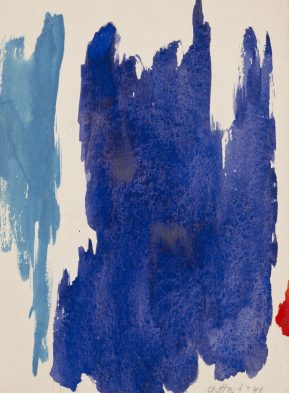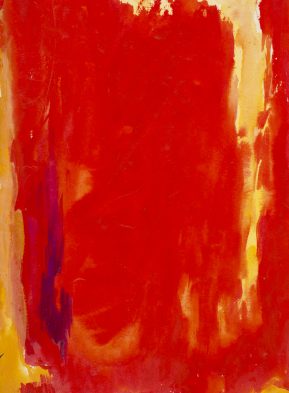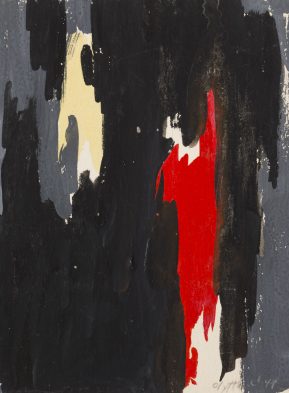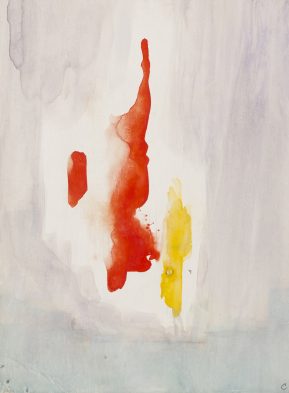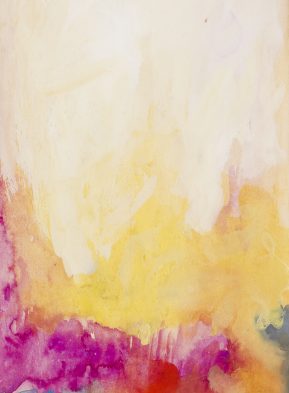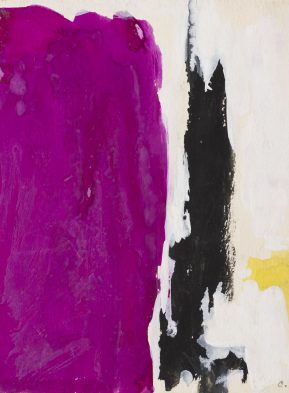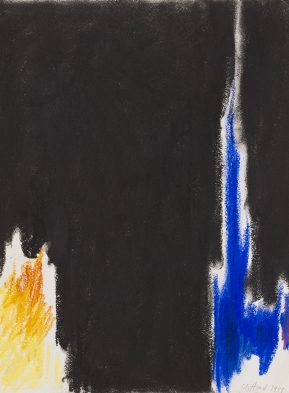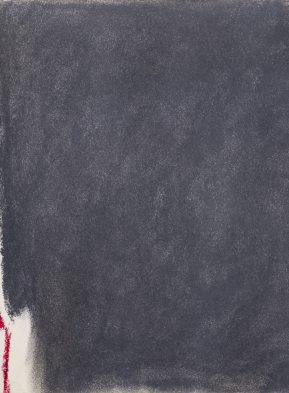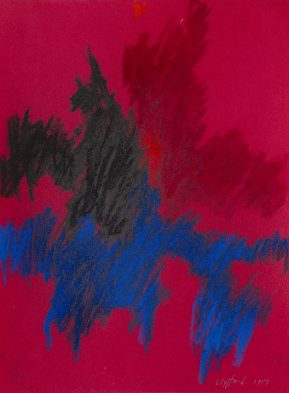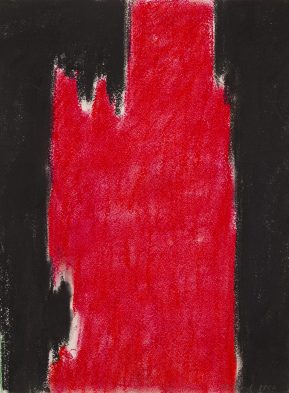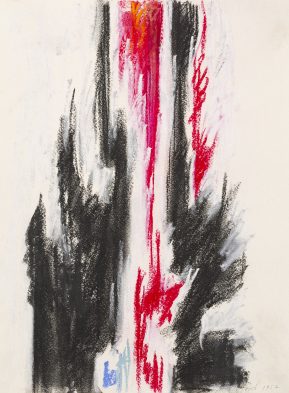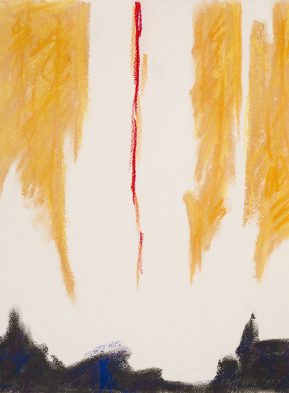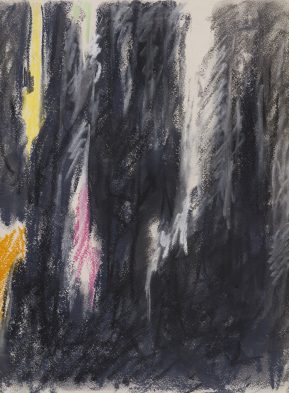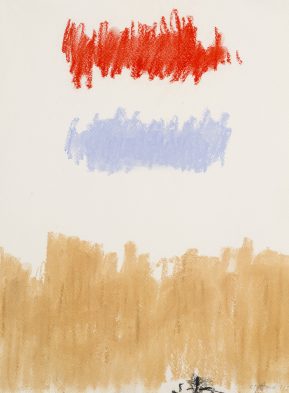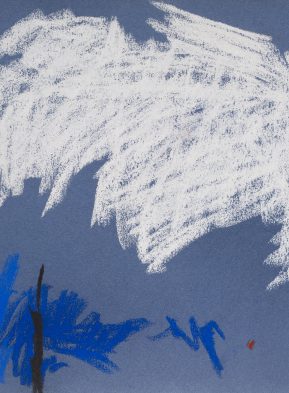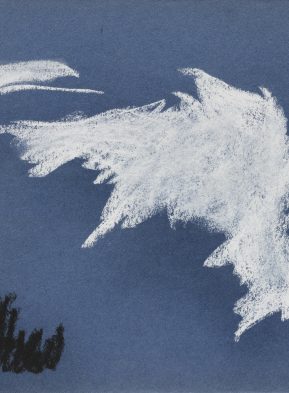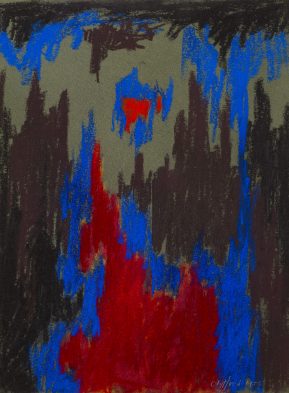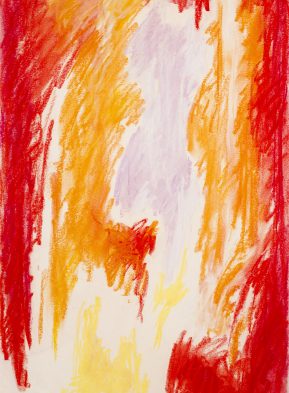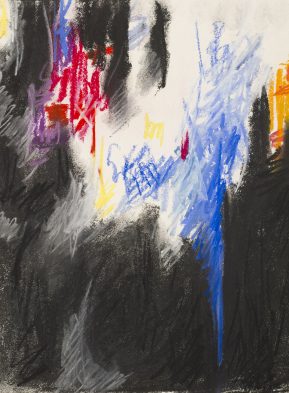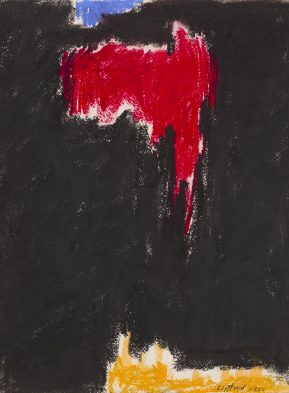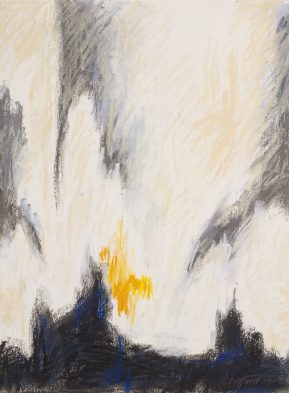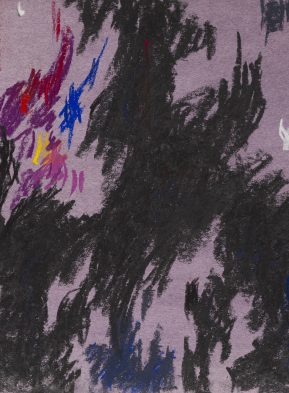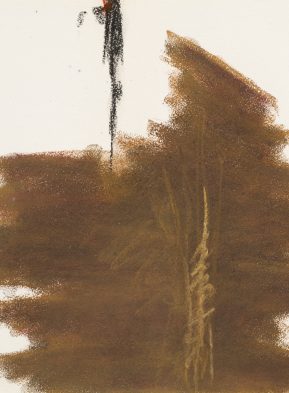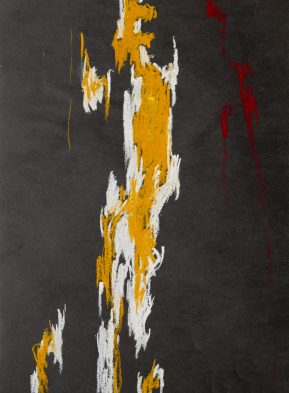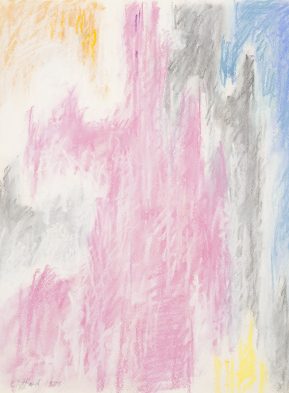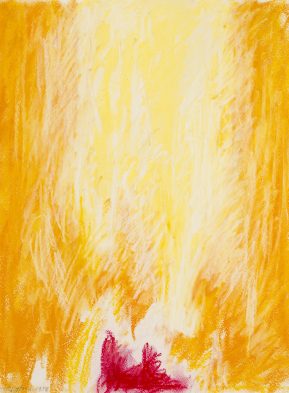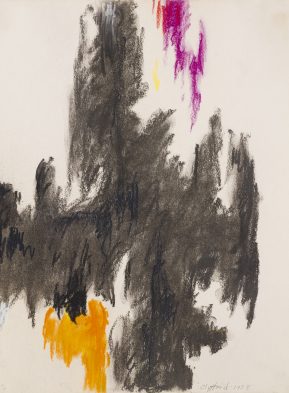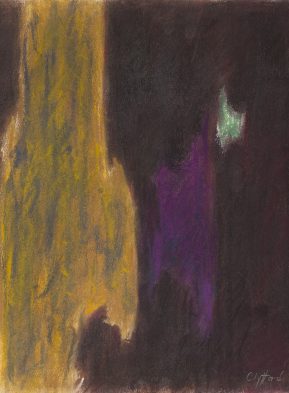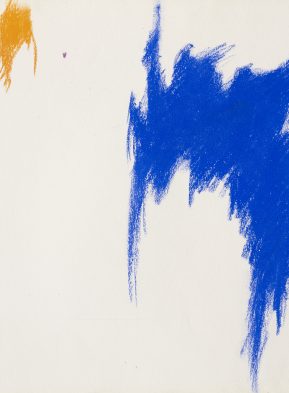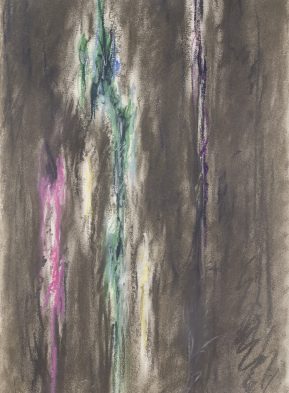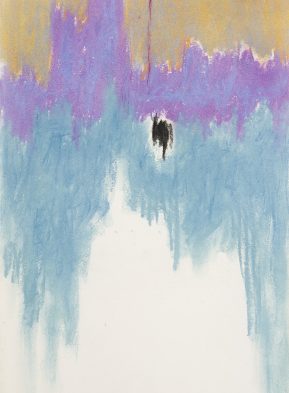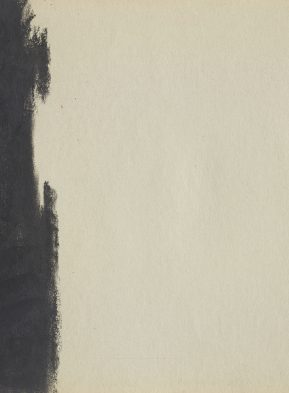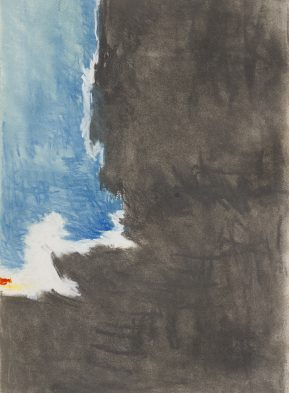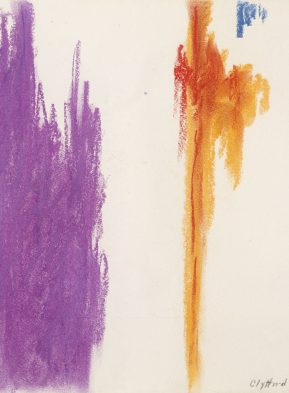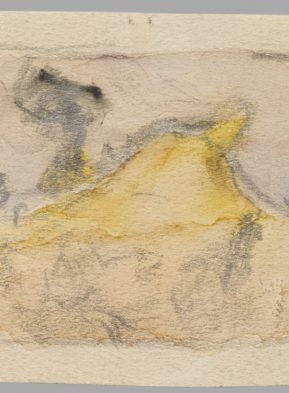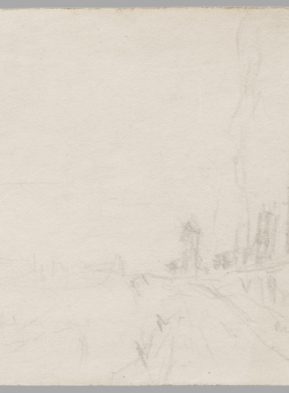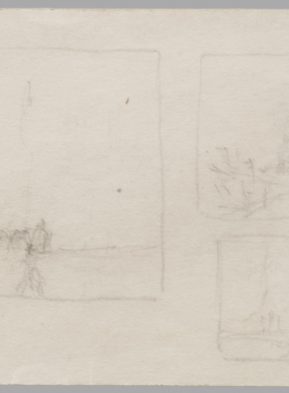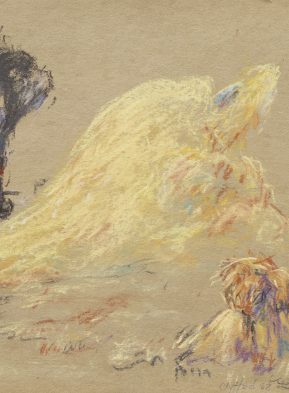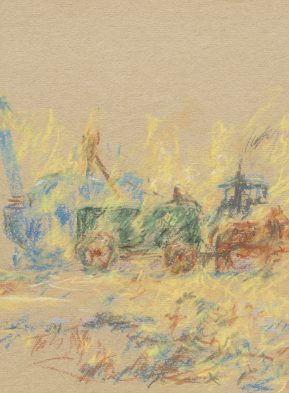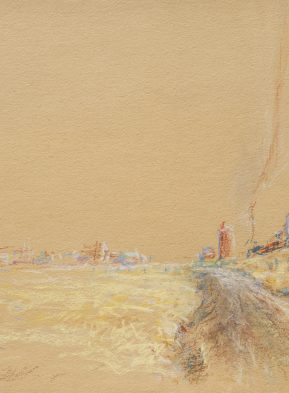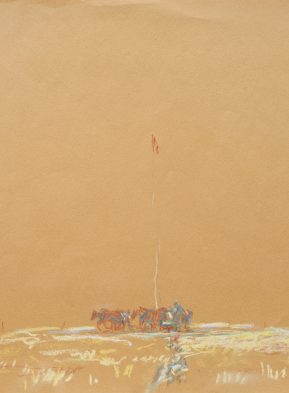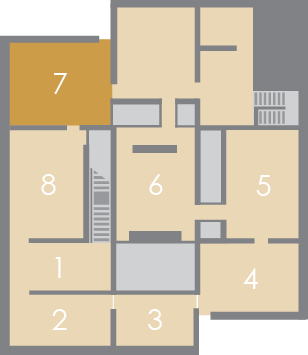
New York City
In 1950, Still began an eleven-year sojourn in New York City. By withdrawing his work from public exhibition and sale the following year, Still strove to take control over how his art was seen. With this liberation from the mainstream art world came a renewed sense of artistic clarity and drive. Still executed almost the exact same number of canvases as works on paper (roughly 280) during his time in New York, demonstrating the pivotal role drawing continued to play in his visualization and working processes.
With the exception of a few watercolors, Still’s works on paper from this time are almost all done in pastel, a medium familiar to him from his youth in Alberta, and one that intensifies the immediacy of markmaking, surface materiality, and dramatic color that characterize his canvases from this period. Though a few pastels from this phase relate directly to later paintings (PP-136, for example, is a study for a painting created nearly twenty years later), most of them are independent explorations of form and composition.
Memory Pastels
Four pastels in the exhibition, titled by Still Memory, are from a series of seven drawings that Still created in 1968, the year his father died. Four small graphite sketches found in a stack of his early, undocumented works have a clear connection to the later Memory drawings: one imagines Still having the nostalgic urge to re-create the scenes as an homage to the Alberta landscape and farm scenes that pervaded his youth. At the same time, the concise, lyrical tone of the later work illustrates how Still’s artistic vision had evolved since he first recorded the moments as a young man.
Citation Information
Chicago
David Anfam, Bailey H. Placzek, Dean Sobel. “New York City.” In Clyfford Still: The Works on Paper. Denver: Clyfford Still Museum Research Center, 2016. /worksonpaper/new-york-city/.
MLA
Anfam, David, et al. “New York City.” Clyfford Still: The Works on Paper. Denver: Clyfford Still Museum Research Center, 2016. 1 Nov. 2016 </worksonpaper/new-york-city/>.
